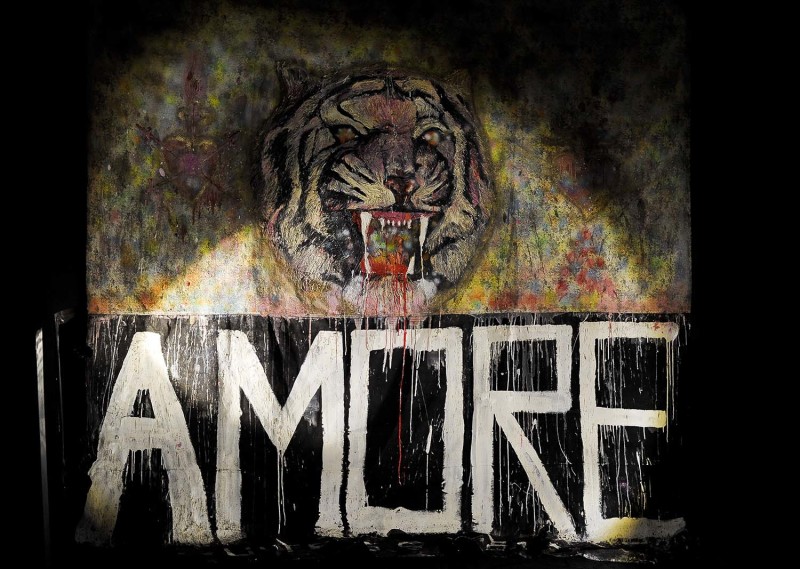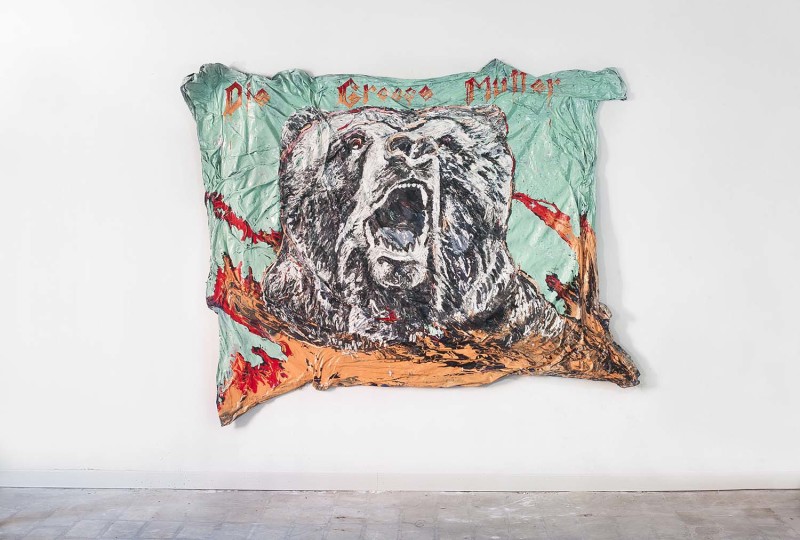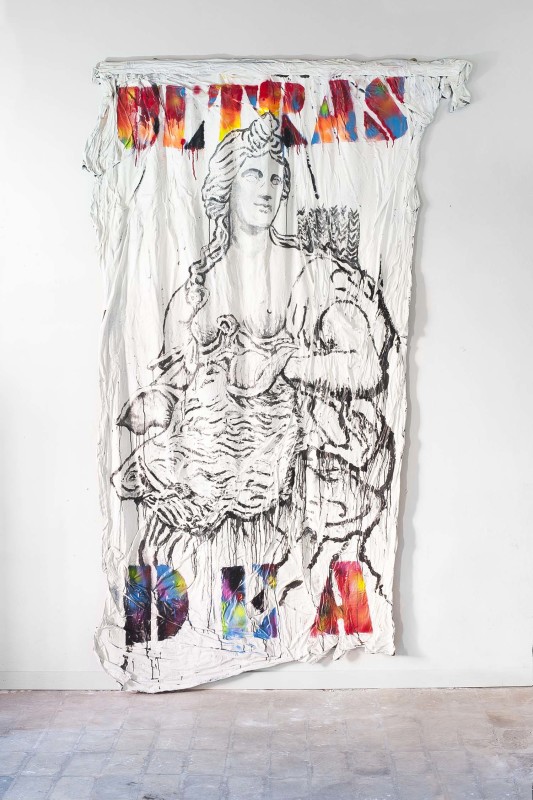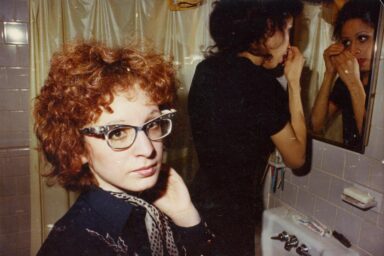In a very dense moment of cultural events – the Venice Film Festival, the Art Biennale and the Festival of Arts Giudecca – Dove sono gli Ultras provides an analysis of the symbol through the celebration of its communicative and totemic power, in an exhibition especially sounded by Rodrigo D’Erasmo, an affirmed violinist, currently a member of Afterhours, the Italian rock band.
Dove sono gli Ultras opens on Thursday, September 7, at 6.30 pm in the brand new One Contemporary Art space in Giudecca until October 8, 2017, with the collaboration of White Noise Gallery. Originally held in the spaces of White Noise Gallery in Rome from November 2016 to January 2017, the exhibition is made up of crosses, panthers, devils, skulls, bears and bulldogs taken directly from banners, flags, t-shirts and scarves of football fans. All these symbols, spun by the extraordinary creativity of Cristiano Carotti, are reoriented in an unprecedented installation, based on an engaging overall vision of what evolves around the almost eucharistic and sacred dimension of the “rite of football”. The totemic element is the display, in this new context, of the Hai Paura del Buio (You’re Scared of the Dark) plastic work inspired by the facts of the Diaz school during Genoa’s G8, in the long and bloody night of July 21, 2001. The work is a huge effigy of a Black Policeman (3.5 meters high) that the artist has produced for the festival created by Manuel Agnelli, leader of Afterhours, which took place in L’Aquila on October 4, 2014.

Carotti’s starting point for the research and studies is the “archetypal theory” by Carl Gustav Jung, through which we investigate the aggregative phenomena and the building of collective consciousness. “Dove sono gli Ultras” (Where are the Ultras), is not a question and it has no question mark, because it is no (longer) the famous choir sung in all the stadiums by the football supporters to provoke the opponent’s corner. In Carotti’s work Dove sono gli Ultras, it becomes a way to indicate that place of our self unconscious, where archetype encounter our rational ego, shaping and generating a specific type of social dynamics, as suggested by the Jungian perspective. Using as a basis for his research a visual analysis linked to the world of ultras, Carotti tells about the influence that the symbols have on each of us.
Throughout history, around the symbol and its emotional charge that recalls universal ideas and forms such as shadow, death and the gods of the Olympus, have joined armies and political parties have been constituted. A blind faith is built, which, almost always, has nothing to do with the origin of that symbol and ends up dominating the individual’s sense, as evidenced by the advent of Nazism, one of the most clear and tragic transfers between collective and individual, achieved through an archaic iconography, once transformed and given new meanings.


The symbol, over time, rises to archetype, until it activates a mechanism that drives people to perform acts that in some measure transcend from their conscious control. Carotti’s opinion is that “in the Ultras universe, there is a clear connection between symbol and action, between image and belief.” The banners exhibited in the curves of the stadiums are often the same symbols that were at the helm of the armies and are found to generate similar behaviors, becoming protagonists of actions that often lose the sporting dimension they were conceived for. The question that seems Carotti asks himself, paraphrasing Jung, is whether, dominated by the archetype, we are all Ultras.
Cristiano Carotti, born 1981, lives and works between Rome and Terni. Educated at the Academy of Fine Arts in Terni, he articulates his research between painting and installation. His work investigates social dynamics in their most extreme expressions, through the study of the archetypal power of symbols within communities. He has exhibited in numerous national and international occasions and has received several awards in museum ambit: in 2013 the sculpture “Hai Paura del Buio” after Milan and Turin is presented at the Auditorium Parco della Musica di Roma; at the end of 2014 the work “Italianrocket1861” became part of the permanent collection of M.A.C.I.S.T. of Biella; in 2015 the project “Blackswallow V14” is shown at the Venice Biennale; in 2016 HALLE 14 – The Spinnerai Center for Contemporary Art in Leipzig exhibits the corpus of works produced during the period of residence within the museum. He operates in musical, theatrical and cinematic collaborations: in 2016 his video “Camera Red”, realized for RRUNA brand, was selected among the finalists of the Istanbul Fashion Film Festival.
Cristiano Carotti
DOVE SONO GLI ULTRAS
Site specific sound by Rodrigo D’Erasmo
Opening 7 September 2017, at 6.30pm
8 September | 8 October 2017
Every Day from 10am to 6pm
One Contemporary Art Space
Giudecca 211/B | Venezia
#dovesonogliultras
onecontemporaryart.it



